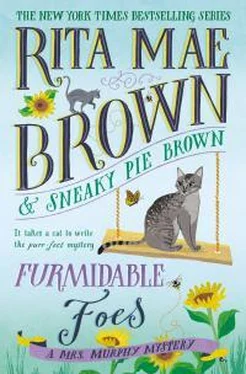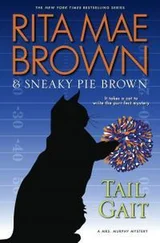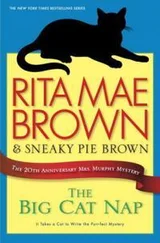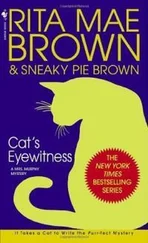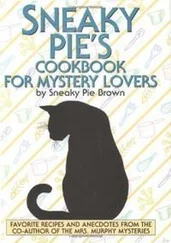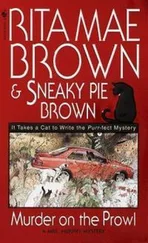Kneeling down to inspect the magenta peony was Mary Minor Haristeen, in charge of Buildings and Grounds. “Harry,” as she was known, was the first woman to hold this prestigious position. In the past the consensus was that women couldn’t operate the equipment needed for such a position, nor could they fix same. Harry could and did do it all. She loosened the soil around a grouping of the explosive bush, all magenta, pink, and white. She’d put them in herself last fall.
Next to her, also turning soil, knelt her childhood friend, Susan Tucker. Susan had graduated from William and Mary, which she had loved and still did, while Harry had graduated from Smith College. Now in their early forties, they still tussled over who attended the better institution.
“So, why don’t we go down to Williamsburg to check those gardens?” Susan suggested, then peered into a pink bloom. “Have you ever noticed that peonies host black ants?”
“The pink peony is hosting the best party.” Harry stood up and stretched her back. “Actually, I think the ants help with pollination, but don’t hold me to it.”
Susan rose, too. Too much time on her knees had finally gotten to her.
Harry called out to the two other members of the Dorcas Guild, the main ladies group, “We’re about finished here. Going over to the grave at the red oak. How you two doing?”
Janice Childs, tall, well groomed, wearing a gardener’s apron over her summery dress, called back. “Meet you there.”
Mags Nielsen, on the high end of that quad, hollered down, “Me, too.”
Harry and Susan walked to the red oak on the western side of the quad, which contained the graveyard.
“What are you doing?” she hollered to Pirate, her Irish wolfhound, huge, over a year and a half now but still a giant puppy.
“Stop running,” Tucker, the corgi, ordered the big fellow.
Pirate did that. “I wasn’t near one tulip. I was not digging. I was stretching.”
“Make her happy. Do what she asks.”
“Weenies.” Pewter, the fat gray cat, sauntered by, tulip in her mouth.
Mrs. Murphy, the tiger cat, now trotting alongside the three other animals, said, “Pewter, drop the tulip. She hasn’t noticed it. She’ll be one step ahead of a running fit if she does.”
“Bother.” But Pewter dropped the yellow tulip.
One lone grave with a modest engraved marker rested under the tall red oak, leaves murmuring in the breeze.
On the headstone engraved in simple roman bold was the inscription UNKNOWN WOMAN, DIED 1786. REST IN PEACE.
Underneath this an “α” and an “Ω” had been engraved, alpha and omega, beginning and end. Since this corpse, or really just her bones, had been discovered on top of the caskets for the Taylors, in November 2016 she could not be identified. Dating the bones revealed she had been a woman, but the absolute fortune in pearls—seemingly the size of pigeon’s eggs, diamonds between each pearl, long enough for three long strands that had been found with her—bespoke gender as well as enormous wealth, riches beyond imagining. A pair of earrings to match along with pieces of a silk dress in an expensive mustard yellow were all that remained.
This was sent to the medical examiner’s office, the jewelry deposited in the large secure safe at St. Luke’s.
Naturally, the pearls and diamonds provoked a discussion about whether or not there had been drag queens in America in the late eighteenth century. For some reason modern-day individuals contest the obvious. There were bones that could tell the tale. What if this had been a man?
Unable to resist, Harry had said, “Of course. There were drag queens in fifth-century B.C. Athens.”
To which Janice Childs, well educated, now walking to the grave, had replied, “Yes, but they were on the stage.”
That conversation, begun over a year ago, remained unresurrected, unlike its cause. The real shock came from finding out that these bones belonged to an African American woman more than likely in her thirties. She had been healthy, murdered, her body hidden using what was then a fresh grave, the only grave. She was killed by a physically powerful person, most likely a man, and, given that men, rich or poor, usually worked hard, most men could have snapped her neck.
The mystery of who she was and who had killed her remained a mystery. But the Very Reverend Herbert Jones felt that, whoever she was, she deserved a Christian burial. Not being a parishioner of St. Luke’s, she couldn’t be buried in the graveyard, so this lovely spot under the red oak became her final home. A small gathering assembled for the service for the Burial of the Dead on April 2, 2018. She’d been found in November 2016. The time lag reflected all the work at the medical examiner’s office, fascinated as they were, plus the legal details that needed to be settled before she could be laid in the ground again. Susan’s husband, Ned, and Fair, Harry’s husband, built a simple pine box, reflective of her time if not her position. Had she been a member of St. Luke’s, her passing would have been noted in the meticulous records. Nothing about her appeared in the county records either.
Janice, Mags, Susan, and Harry looked down at her tidy grave, which Harry tended. The cats and dogs sat nearby but not on the grave.
“I was thinking about adding something a bit more here. I don’t know. Shrubs are easiest.” Harry glanced up at the downy woodpecker in the red oak looking down.
“Whatever it is, it needs to be of the time,” Mags announced.
Susan replied, “Given all that’s around us, Mags, all those gardens in their original state from Monticello and Montpelier and Williamsburg, I think I have a good idea.”
“Don’t you think the peonies are a bit showy? I mean, she doesn’t need a peony.” Mags, who spent money like water, feigned restraint, at least in plantings.
Harry bit her tongue, for she had fought for those peonies. Lutherans shy away from too much show, and peonies are the trumpets of the floral world. Then again, weren’t the stained glass windows showy? She’d finally won her battle and didn’t feel like fighting it all over again.
As it was, she placed the peonies in the back along the quads, not in the front of the church grounds. There she planted more boxwoods, to augment those originally planted, and thousands of white lilies between the buildings, behind the arcades, as a backdrop for the stunning magenta peonies edging those small grass swaths between the buildings.
“Actually, peonies became a big deal in English gardens, in Europe, in the early 1800s but we had them here,” Harry said, quietly.
Susan, having lived through the peony palavers, mentioned, “They are native to the Northern Hemisphere. We had them here as well as in Canada.”
Janice, not to be outdone, had studied peonies when all this came before the Dorcas Guild. Being a staunch Lutheran, she, too, felt uneasy with too much splash. This did not prevent her from driving an expensive Audi A6. However, this was her only concession to the booming success of her brewery business with Mags, her partner.
“Of course, but this peony was introduced to Britain from the Mediterranean in 1548. Something more discrete perhaps.”
“Woody peonies?” Harry posited.
Susan, seeing the exchanged glances between Janice and Mags, quickly said, “We can’t go wrong with white azaleas. A shrub is not as much work as flowers. What if we plant three white azaleas behind her headstone?”
Harry jumped on the suggestion. “Lovely. Discrete.”
“I agree.” Mags smiled, feeling she’d gotten her way, as Janice nodded.
“I’ll take care of it. Thank you two for coming today and getting the early weeds.” Harry was grateful.
Читать дальше
